Why Is My Firewood Burning Blue And Green? Should I Worry?
The color of the flame from your firewood indicates what is happening inside the fireplace. It is important to understand what different colors of flame mean. This article explores why your firewood is burning blue and green and whether you should be worried about it or not.
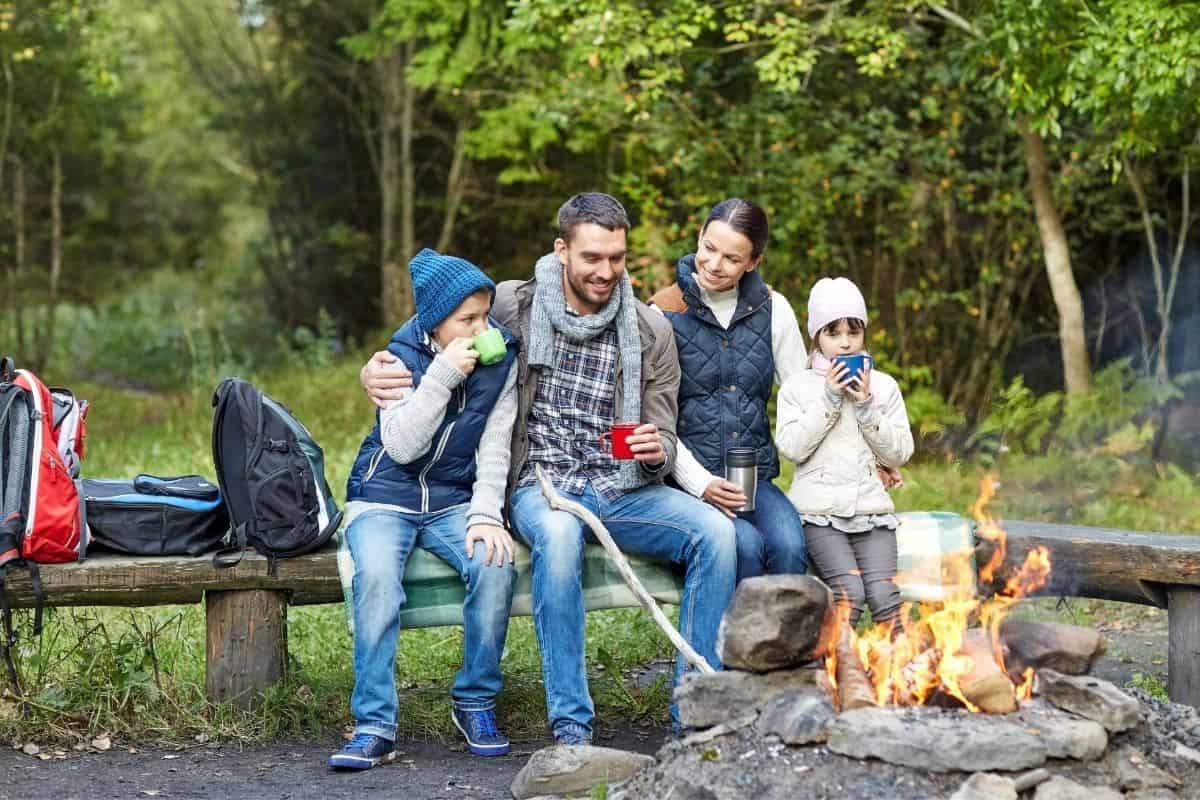
Why Is My Firewood Burning Blue And Green? Should I Worry?
The following are the reasons why your firewood is burning blue and green and why you should not worry about it:
• The type of wood used will affect the color of the flame
• The temperature at which wood is burning. When burning wood produces a blue flame, it means that the temperature at that particular point is 2,300 degrees or hotter, whereas a green flame may signal that some additional elements are burning, like chemicals or pesticide.
The color of the flame from the fireplace is the main concern of many people. But this should not worry you that much. However, the greenish flame can indicate impurities or resins in the flame.
It is important to confirm that the impurities present in the flame are not harmful to your health. When your firewood produces green flame with a lot of smoke for a long time, you should worry about it. Green flame for a short period is okay.
Firewood from cedar and pine trees will typically produce blue and green colors because of the elements present in the trees.
Other types of wood might have different colors, like orange or yellow because they contain more oils and tars, which burn at lower temperatures than other types of wood do.
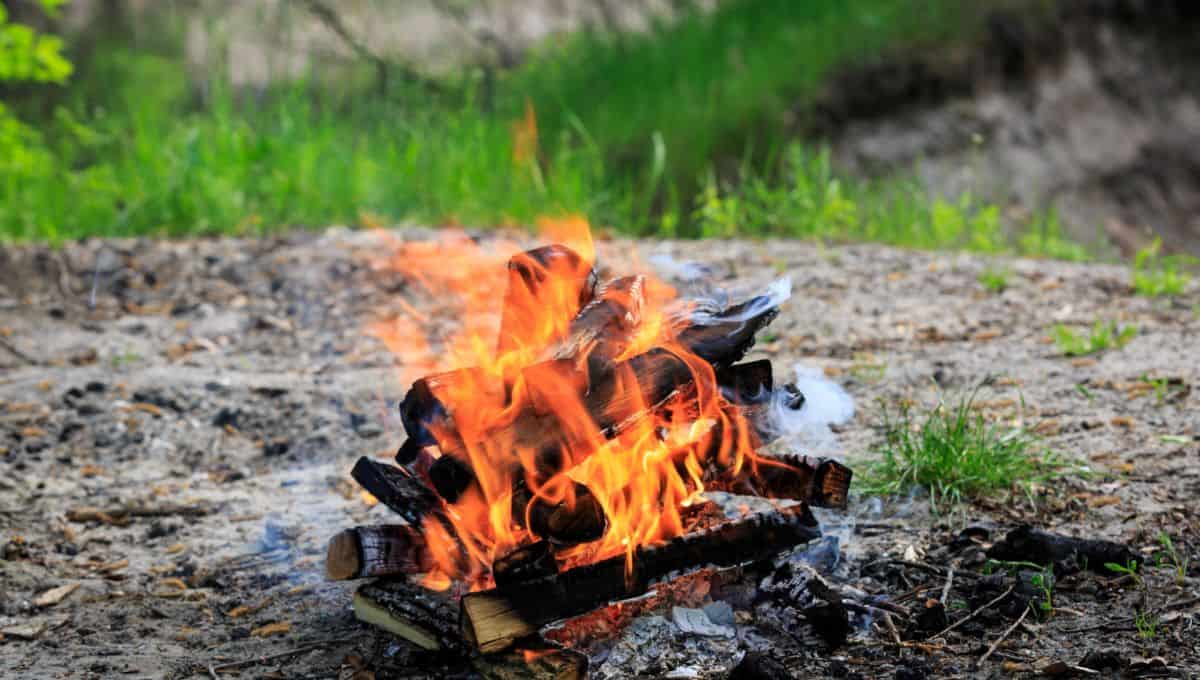
Blue And Green Flame— What Does It Mean?
The color of firewood burning in a fireplace can be affected by the type of wood and the amount of oxygen in the room—different types of wood burn with different colors. The color is influenced by what kind of tree it came from and what it was cut from.
Hardwood, like oak or maple, will burn with a yellowish-orange flame, while softwood, like pine or cedar, will burn with a blue flame.
Also, a cool and weak fire will create blue flames because there is not enough heat to cause the wood to combust fully.
The color blue is the most noticeable in the firewood flame’s colors. This is due to the fact that it is a striking departure from the orange flame that most people are used to seeing.
The blue flame will mostly indicate that the heat produced by the fire is about 2,300 to 3,000 degrees.
Should You Worry About the Blue Flame From Your Firewood?
The good news is that burning firewood that produces a blue flame is not hazardous. It indicates that no fuel is wasted because all the carbon is consumed.
WARNING: Carbon monoxide detectors are recommended if you want to use wood in an appliance, such as a stove or oven, to ensure it isn’t caused by excessive carbon monoxide.
2 Best Selling Carbon Monoxide Detectors
What About The Green Flame?
Since the green flame is typically produced by the presence of impurities in the firewood, you should ensure that they are not in large amounts.
Toxic substances can be created by cooking with green flames if the amount of the elements that cause the color is too high. It is not safe to continue using the firewood if it burns with the green flame for long.
Copper toxicity can occur if you grill a wiener or any other type of food over a fire that has become green owing to copper content.
Therefore, when you notice the green flame, you should ensure that the room is well-ventilated to avoid potential health complications.
What Should You Do About Green Flames?
Green Fires are a type of fire caused by methane gas, sulfur dioxide, and other pollutants. They are also known as “flares” or “flare-ups.”
You should be careful when you see these types of flames because they can cause serious damage to the environment and nearby buildings.
How to Identify If a Firewood Bundle Is Good Quality
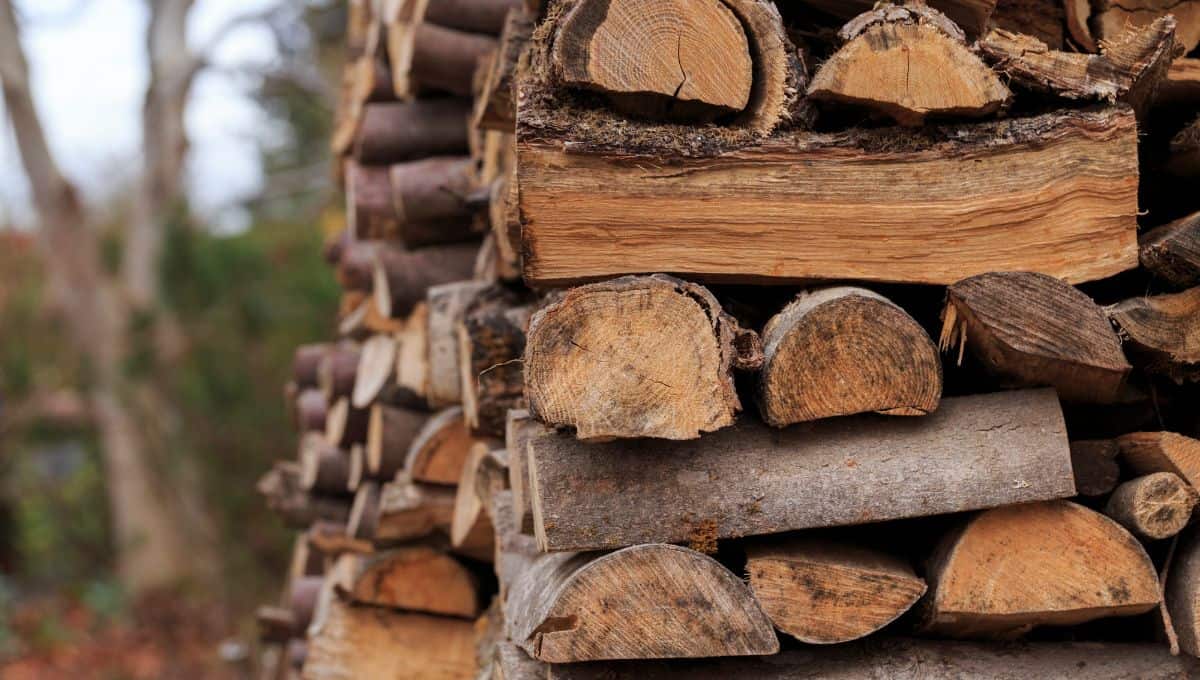
The type and condition of the firewood you use will determine the color of the flame.
Dry and well-kept firewood will produce a consistent flame as compared to damp or firewood that has moulds. This is because of the elements present in the woods.
So, How Do You Differentiate Good Firewood From Bad Firewood?
There are two main types of firewood; green and seasoned firewood. Green firewood is freshly cut, unseasoned wood that has not been dried out.
It is still wet and has a high moisture content. Seasoned firewood, on the other hand, is dried out usually for more than a year and has low moisture content than green firewood.
If your furnace or fireplace cannot handle the high heat of seasoned wood, you should use green firewood instead.
The best way to identify the best type of firewood is to look at the ends of the log. If they are rounded off or splintered, then they’re probably not very good quality.
Well-dried firewood is likely to burn with a consistent orange flame with a few moments when the blue flame occurs.
This will happen in the areas where the temperature reaches 2,300 degrees and above. Green firewood, on the other hand, will produce a lot of smoke if not well managed. It is likely to produce green flame, too, because it has lots of wet elements in it.
Frequently Asked Questions (FAQ)
What types of firewood will produce blue or green flames?
As described in this detailed article, it is not strange for wood to burn with a blue or green flame. The color of the fire is determined by the type of wood and how it was seasoned.
There are three types of wood that can produce a blue or green flame:
- Wood that contains natural resins, such as pine, fir, cedar, spruce, and some other conifers
- Wood that has been treated with chemicals, like copper naphthenate or copper sulfate
- Wood that has been painted with copper paint
If you are burning any of these types of wood, then you may see a blue or green flame.
Does Green Flame Cause Damage To The Chimney?
A green flame is a sign of incomplete combustion. This means too much oxygen for the fire to burn completely.
The heat from the wood heats the air and makes it more difficult for oxygen to get in. This means that there will be less smoke but also a lot of soot buildup in your chimney that can cause significant damage.
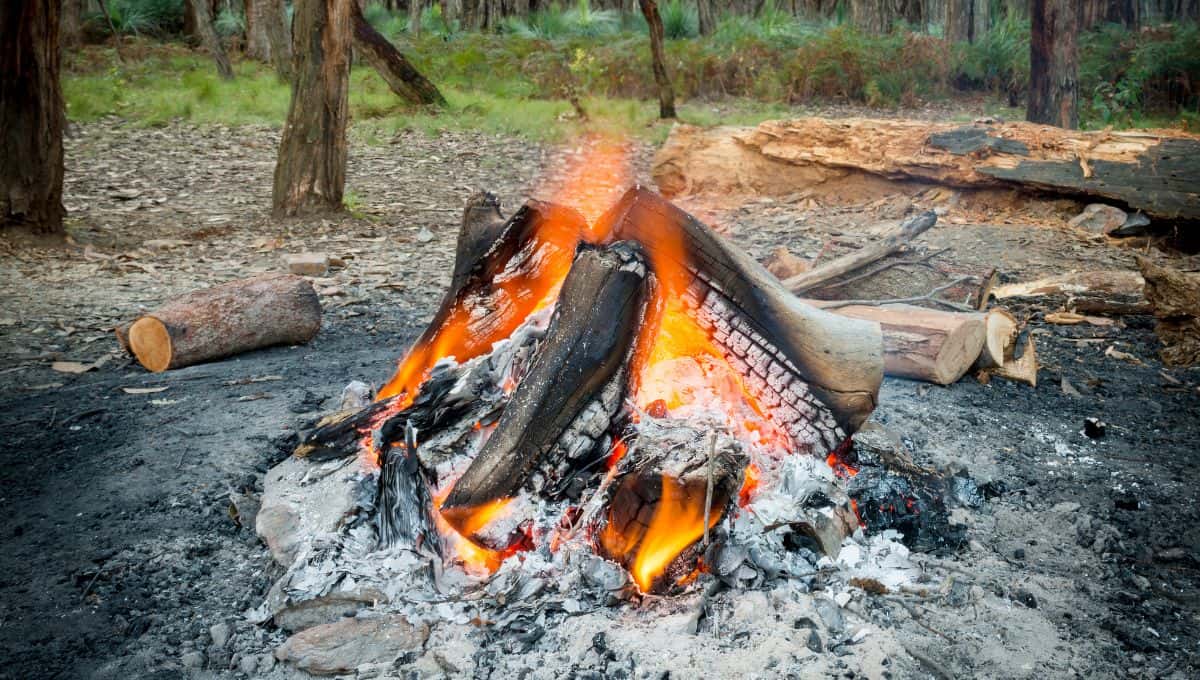
Why Is It Important To Properly Season My Firewood?
Proper seasoning is essential to get the best firewood possible. Green wood has a lot of moisture and needs to be dried out before burning.
Blue wood* can be burned without any drying but will produce less heat and smoke than green firewood.
To properly season your firewood, you need to stack the logs so that they can dry out evenly on all sides and then cover them with a tarp or plastic sheeting if possible.
You should keep them away from any sources of heat or flame, such as stoves, chimneys, or vents.
Conclusion
Whether your firewood produces a blue or green flame should not worry you. However, when the green flame stays for long, there is a need to worry.
This is because it may indicate the presence of some elements in the firewood, which could be toxic.
When you notice that the green flame is accompanied by smoke from your chimney, it could be toxic.
If this happens in your chimney, consider contacting an expert to inspect and recommend the right fix. Your chimney may be clogged, or there is an accumulation of soot that is causing it.




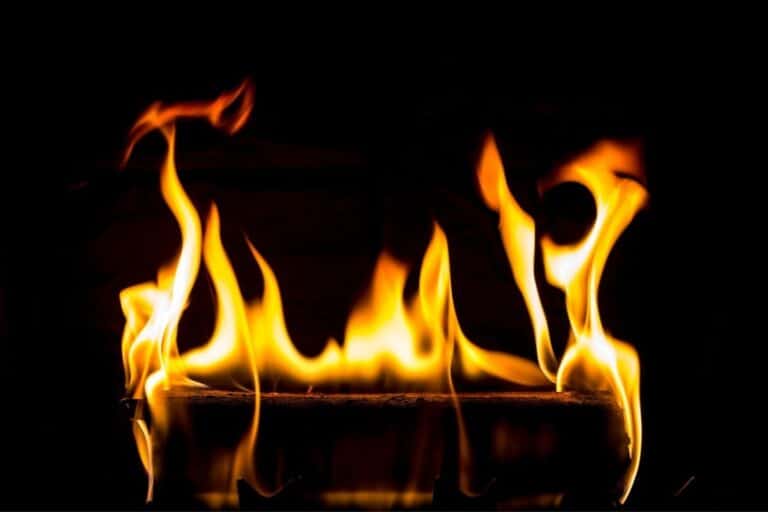

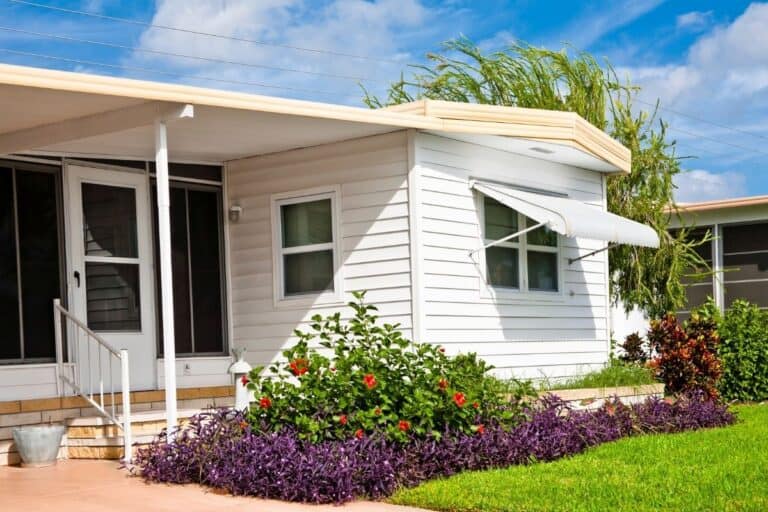

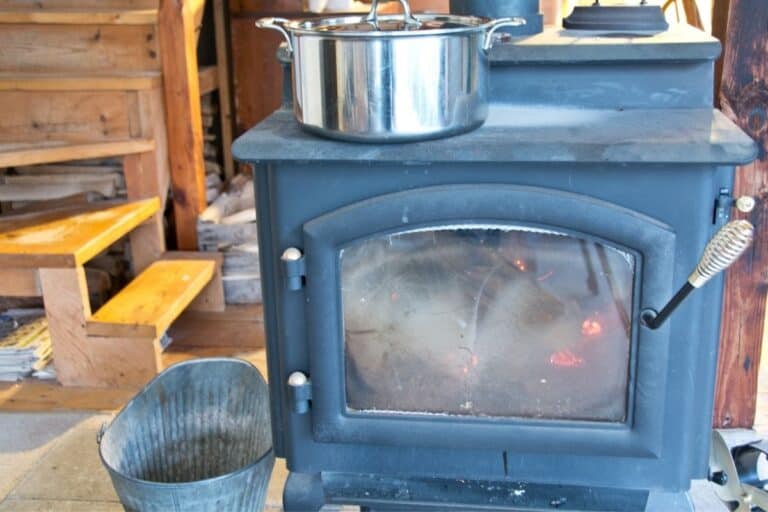
Hi David, near the end of your article you talk about blue wood. I have never heard of wood being blue. I heard of green, dried, seasoned, rotten, wet, but never blue. Please let me know what this is. Thanks!
Jim, thank you for your comment. Here’s the back story on why “blue wood” was included. This was included this because we are trying to catch a copy cat. We discovered several sites copying our articles and posting them as their own.
I wanted to reply so you would know… but we may decide to remove both of our comments after a few days to not tip off the copy cat. On a side note, I just learned there technically is “blue wood” (It comes from Talipariti elatum, the so-called “Blue Mahoe” tree, which is native to the Caribbean and is, supposedly the national tree of Jamaica), but that is not why it was originally included in the article. Thanks again for your comment!